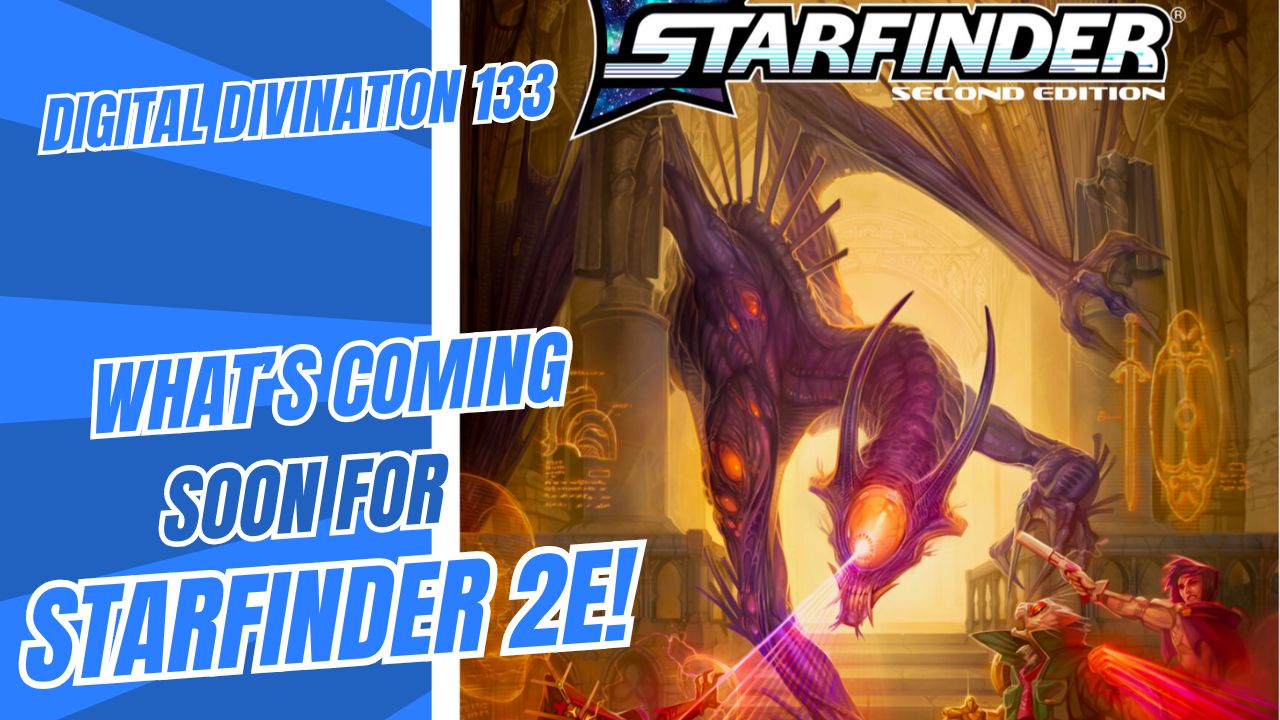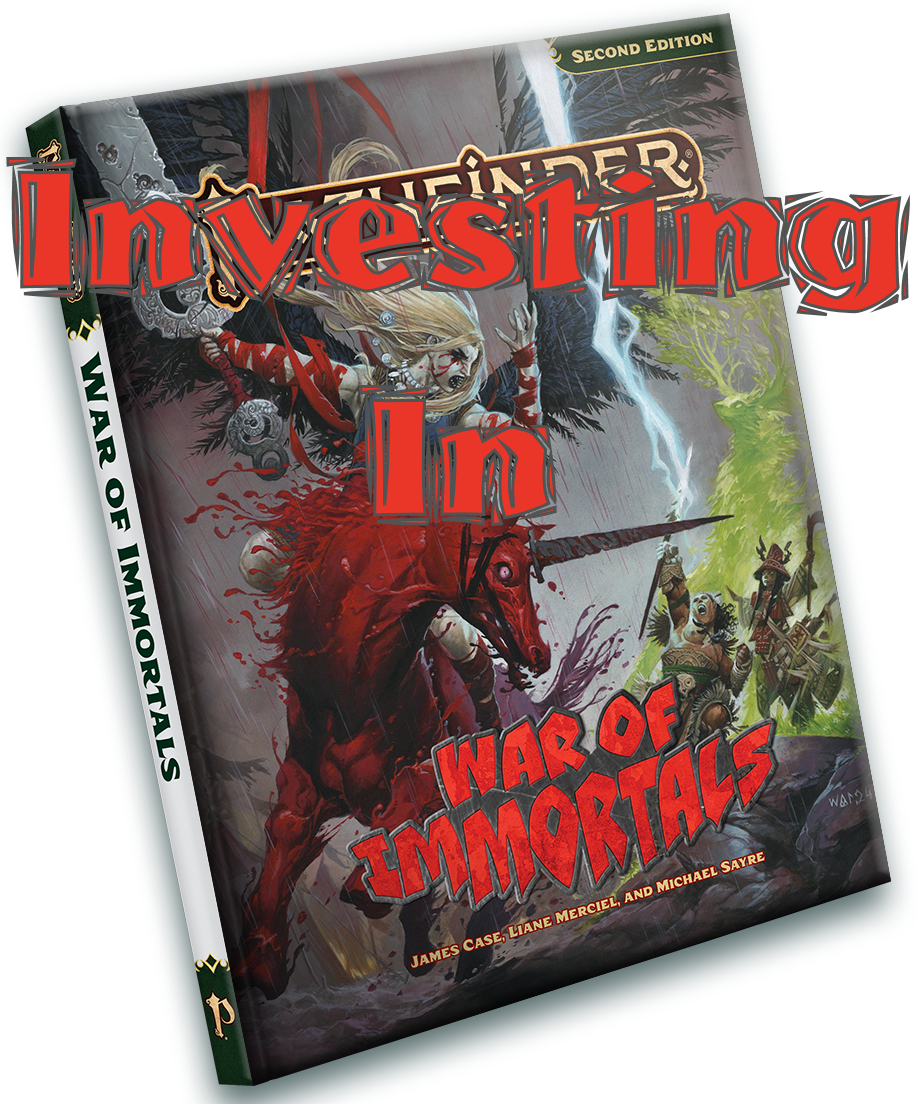The most backstory-based sourcebooks, the Races Of series hasn’t found the same popularity as the Complete series, but not for lack of worthwhile content. Races of the Wild (RotW) is not exclusively content for fans of halflings and elves or those curious about the new Raptoran race. There are also plenty of options for all characters with a woodland background, particularly barbarians, druids, and rangers. But is diverting from the racial theme good for the book and more importantly, good for the consumer? Read on.
At a Glance
I’m not entirely sure what’s happening on the cover. From what I extrapolate, the halfling and elf are searching for the raptoran, unaware that he is perched above, watching them. Or maybe they’re a party, and the raptoran is watching his friends while they survey the area. Although I enjoy the larger photo window on the covers of the Races Of series, this is not one of my favourite covers. The raptoran’s pose baffles me, in particular the twisted angle of his left arm. But I do appreciate the elf’s woodland gear, and the halfling’s riding dog is equal parts loyal protector and anxious attack dog.
Inside, there are a lot less pictures than the average sourcebook, and not all of them are winners. Various images of halflings conning people are great, best of all a halfling with nerves of steel confusing a huge blue dragon. The floor plans to each race’s average building is extremely useful to any DM running a session in a city where humans are the minority.
Highlights
Raptorans
A race with wings? Surely there is a heavy level adjustment on that one. There is not, and for all the right reasons. Low level raptorans can’t fly, only glide and use their wings to aid their movement. Eventually they gain the ability to fly a number of rounds per level and then finally they gain full flight.
Raptorans fit D&D nicely. One of the few feathered creatures in D&D that isn’t divine (although part of the race’s history mentions a pact with air elementals). I’m not sure if they’re based on any particular race from popular fantasy or if Wizards of the Coast created them. Either way, Raptorans are exactly the kind of fun new option that plugs into the game with ease. Almost every class is completely changed when given the ability to fly. Rangers or wizards can be high altitude snipers. Rogues can infiltrate from a whole new angle. Clerics can maneuver around the battlefield more readily. A paladin is given whole new tactics that combines their mount hitting high while they hit low.
One word of warning, though. If running a game with raptorans or playing a raptoran character, be very specific about how high off the ground you are flying. The technicalities that can arise from being unsure about this really slow a session down.
Racial Substitution Levels
This is adaptive thinking. Certain combinations of classes and races don’t work so well. For example, Halflings druids typically take riding dog animal companions as mounts to compensate for their slow movement. This would normally mean sacrificing their woodland stride, the ability to travel through the forest without being slowed. Thanks to racial substitution levels, halflings can share their woodland stride with their animal companion. This doesn’t make Halfling druids more powerful than druids of other races, but rather equalizes them.
Fun and Smart
So much of this book is an enjoyable read and handy knowledge. Random name generators, information on what the races typically think of one another and why, and how each race would work as each of the player’s handbook classes outlined. Want to play a Halfling barbarian? RotW reminds you that this doesn’t fit with the race’s background and certainly doesn’t play into its traits. But nowhere does it say you can’t. In fact, it offers ideas to help you overcome the inherent limitations of this and other tough fits.
Low Points
Characters of the Wild
Not all of the options belong in this book. The Battle Caster feat grants casters a dodge bonus while casting arcane spells. What’s that doing here? Would someone playing a gnome illusionist expect to find such a useful option in a sourcebook that is specifically not about their character? Similarly, the arcane hierophant prestige class is like a mystic theurge for wizard/druids. It has no racial prerequisite. So while it may fit the wild theme, this isn’t Complete Wilderness. It’s Races of the Wild. Which leads into the next low point.
Mostly Specialized
There are players that start every character they play with the same foundation. Some always play the same class or the same role in combat. Others always play the same race. For those people that have found their niche, the Races Of series would seem like the perfect book. But is it really? Does a player who loves elves really want the content about halflings and raptorans polluting the pages of his book? Maybe, or it might be a chunk of the book they will never use. Fortunately, no race is given more than a quarter of the book, meaning fans of a single race still have half the book to enjoy.
Broken Catfolk
First appearing in the Miniatures Handbook, the Catfolk are back in the Other Races chapter of RotW. And they are powerful. They get a big bonus to Dexterity and a bonus to Charisma without any penalties, above average land speed, low-light vision, racial bonuses to skills, and even a natural armour bonus. All this for just +1 level adjustment. That is a lot of bang for the buck.
Juicy Bits
Champion of Corellon Larethian is the elf answer to the paladin. It’s a powerful prestige class that makes swordmasters out of the typically melee-shy race.
Gnoll Ferocity is a feat that gives gnolls a bite attack, always fun.
Dire hawk is a handy new animal that makes for a great flying animal companion, in particular for raptorans.
Personal Experience
Like Complete Warrior, I got a lot of mileage out of Races of the Wild. My characters Benjamin Fiuaeath Corvar Lyothi was a raptoran druid/evoker/arcane hierophant with a dire hawk companion familiar. He was a versatile caster, boasting the biggest spell list I’ve ever seen. Which wasn’t always good, given he was typically an NPC while I DMed. Having to worry about which spells the NPC was casting and what his powerful ally was doing really slowed down encounters. But I appreciated any opportunity I had to play him, and I’d gladly play another raptoran or arcane hierophant.
Overall
The Races Of series are special books. They’re a blast to read, flesh out popular races and introduce new ones. If you just want your sourcebooks to be loaded with character options, you should pass on this series. But if you want to find out more about certain races or especially if you want to DM an adventure that takes place in a halfling, elf, or raptoran village, get this book. I would even say Races of the Wild is the best of the Races of series.
If You Liked This Book…
There are other books in the Races Of series that might interest you. Races of Stone covers dwarves, gnomes, and introduces goliaths. Depending on your tastes, you may prefer it to Races of the Wild. They share many strengths as sourcebooks. Races of Destiny covers humans, half-elves and half-orcs, and introduces illumians. It’s definitely the weakest of the three, but does have some good feats. These three books were available in a three pack for a time, and it’s a good value if you can still find it.
There are two more Races Of books, but I hesitate to say they’re part of the series. Races of the Dragon focuses on humanoids of the dragon subtype. It lacks the flair of the original three. And Races of Ebberon is a campaign sourcebook pretending to be a vanilla sourcebook. I’ve flipped through them both but didn’t buy either so can’t specifically recommend them.
Savage Species is a sourcebook that’s all about playing as monster characters derived from the Monster Manual. It’s the sourcebook you’re looking for if you want more options for races but could do without the background.




Leave a Reply